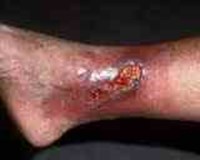
Medical Preparedness and Collapse Medicine
Hey Prepper Nation,
In a collapse situation, we will be required to perform many outdoors activities we are not used to. We’ll be chopping wood, making fires, and doing various chores that have the potential for injury.
Simple injuries like cuts and minor burns will be more common, and so will complications when those wounds fail to heal correctly. One of the most common complications will be infection.
How Can I Prevent Infection?
Despite everything you have done to care for a wound, there is a chance that an infection will occur. Infection in the soft tissues below the level of the skin (epidermis) is referred to as “cellulitis”. Below the epidermis, the main layers of soft tissue are the dermis (you’ve seen this area when you scraped your knee as a kid), the subcutaneous fat, and the muscle layers. Cellulitis is significant to Preppers because it will be very commonly seen in a collapse. Although preventable, the sheer number of cuts, scrapes and burns will make it one of the most prevalent medical problems. This infection can easily reach the bloodstream, and, without antibiotics, can cause a life-threatening condition known as sepsis. Once sepsis has set in, inflammation of the spinal cord (meningitis) or bony structures (osteomyelitis) can further complicate the situation.
The bacteria that can cause cellulitis are on your skin right now. Normal inhabitants of the surface of your skin include Staphylococcus (staph) and Streptococcus (strep). They do no harm until the skin is broken. Then, they can invade deeper layers where they are not supposed to be normally. Inflammation occurs as a result. The injured area becomes red, warm and tender to the touch.
Conditions that will be likely to cause cellulitis:
Cracks or peeling skin between the toes
History of varicose veins/poor circulation
Injuries that cause a break in the skin
Insect bites and stings, animal bites, or human bites
Ulcers from chronic illness, such as diabetes
Use of steroids or other medications that affect the immune system
Wounds from previous surgery
Intravenous drug use
The symptoms and signs of cellulitis are:
Discomfort/pain in the area of infection
Fever and Chills
Exhaustion (Fatigue)
General ill feeling (Malaise)
Muscle aches (myalgia)
Heat in the area of the infection
Drainage of pus/cloudy fluid from the area of the infection
Redness, usually spreading towards torso
Swelling in the area of infection (causing a sensation of tightness)
Foul odor coming from the area of infection
Other, less common, symptoms that can occur with this disease:
Hair loss at the site of infection
Joint stiffness caused by swelling of the tissue over the joint
Nausea and vomiting
The treatment of cellulitis usually involves the use of antibiotics; these can be topical, oral or intravenous. Most cellulitis will retreat and disappear after a 10 – 14 day course of therapy with medications in the penicillin, erythromycin, or cephalosporin (Keflex) families. Many of these are available in veterinary form without a prescription (see our various articles on antibiotics). Acetominophen (Tylenol) or Ibuprofen (Advil) are useful to decrease discomfort. Warm water soaks have been used for many years along with elevation of infected extremities for symptomatic relief. Over several days, you should see an improvement. It would be wise to complete the full 10-14 days of antibiotics to prevent any recurrences.
In a collapse situation, it’s important to be especially careful to wear eye and hand protection. Any injury has the potential to be life-threatening in a situation when modern medical care is not available.
Start now to make sure you are staying prepared.
Via: doomandbloom




 Follow
Follow
Leave a Reply